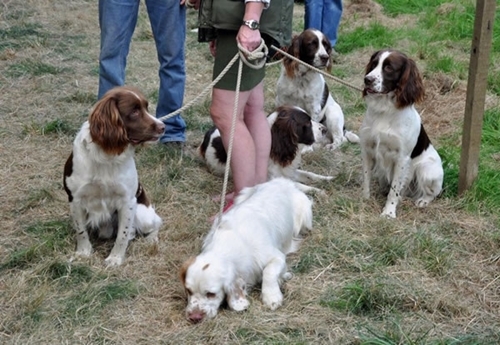This blog post originally appeared on Peter's 'Fresh from the Field' blog on 12th January 2016.
When you look after animals, there is always cause for concern if they become a “little off colour”, especially as they can’t tell you what the matter is, unlike children. Mind you, when I was a child, the assorted animals always grabbed far more attention than us children even when they were perfectly well, let alone if they were ill!

Hence I had to spend a whole day with a broken arm, having fallen out of a tree first thing in the morning while checking out a bird’s nest. It was not until the evening that I managed to get someone to listen to my whinging and take me down to the doctor – who confirmed the break within seconds and sent me off to the plaster room!
Anyway, I digress!
A fellow work colleague sent an e-mail around the other morning saying “When I got home from work last night my dog wasn't quite himself and wasn't able to get out of bed and I noticed a number of quite nasty lesions on his skin. After taking him to the vet they suspected he might have the early signs of Alabama Rot”.
The GWCT just happens to have a Vet working with us at the moment and he commented “It is thought that dogs can be exposed to this toxin during the winter months in wet muddy conditions (especially wooded areas). The toxin can cause skin lesions on the lower legs or feet and damage the kidneys, sometimes causing kidney failure. Advice is to wash mud off your dog after walking and to monitor for any unusual skin lesions. It is important to stress that this is very rare disease, but if you are at all concerned you should get your pet in to be checked”.
There is not a huge amount known about this disease, although the New forest does seem to be a stronghold for it, perhaps because so many dogs are exercised there. The map showing outbreaks of this disease does however cover most of England, so I think it is as well to keep a good look out for it over the next few months, as it does appear to be on the increase. It can and does quite often result in the dog’s kidneys failing, leading to death, however, as with most things, if you catch it early enough then the Vet can certainly help.
A useful site to read up more on this disease is www.vets4pets.com/stop-alabama-rot
Please support the GWCT's pointing dogs